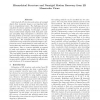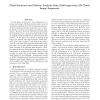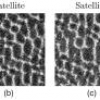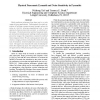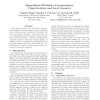CVPR
2000
IEEE
15 years 3 months ago
2000
IEEE
Scene ow is the 3D motion eld of points in the world. Given N (N > 1) image sequences gather ed with a N-eye stereo camera or N calibrated cameras, we present a novel system wh...
CVPR
2000
IEEE
15 years 3 months ago
2000
IEEE
Inferring both 3D structure and motion of nonrigid objects from monocular images is an important problem in computational vision. The challenges stem not only from the absence of ...
CVPR
2000
IEEE
15 years 3 months ago
2000
IEEE
In this paper we present a novel approach to estimate and analyze 3D uid structure and motion of clouds from multi-spectrum 2D cloud image sequences. Accurate cloud-top structure ...
CVPR
2000
IEEE
15 years 3 months ago
2000
IEEE
Many problems in vision can be formulated as Bayesian inference. It is important to determine the accuracy of these inferences and how they depend on the problem domain. In recent...
CVPR
2000
IEEE
15 years 3 months ago
2000
IEEE
?Gibbsian fields or Markov random fields are widely used in Bayesian image analysis, but learning Gibbs models is computationally expensive. The computational complexity is pronoun...
CVPR
2000
IEEE
15 years 3 months ago
2000
IEEE
This paper describes a new method for tracking of a human body in 3D motion by using constraints imposed on the body from the scene. An image-based approach for tracking exclusive...
CVPR
2000
IEEE
15 years 3 months ago
2000
IEEE
Multi-resolution techniques have been used in a wide range of vision applications. Unfortunately, the costly operation of building a proper pyramid strongly reduces its value as a...
CVPR
2000
IEEE
15 years 3 months ago
2000
IEEE
In Proc. of IEEE Conf. on CVPR'2000, Vol.I, pp.222-227, Hilton Head Island, SC, 2000 In many vision applications, the practice of supervised learning faces several difficulti...
CVPR
2000
IEEE
15 years 3 months ago
2000
IEEE
This paper describes a new method for determining correspondence between points on pairs of surfaces based on shape using a combination of geodesic distance and surface curvature....
CVPR
2000
IEEE
15 years 3 months ago
2000
IEEE
We propose a method to learn heterogeneous models of object classes for visual recognition. The training images contain a preponderance of clutter and learning is unsupervised. Ou...

